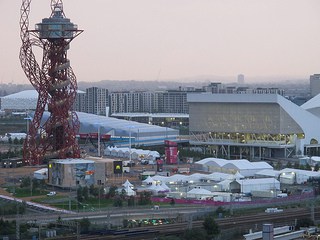Building the Olympic Park: a PM success story

Louise Hardy, infrastructure manager for the construction work for the London Olympic and Paralympic Games, gave a presentation at a PMI event about the project work involved in preparing for London 2012.
She said she had been involved in the programme for five and a half years and that as part of the delivery partner team, her role was to deliver the infrastructure. The Olympic Delivery Authority (ODA) spent public money on the infrastructure, which included 20km of roads, 13km of tunnels, 26 bridges, 7 underpasses, 79 hectares of landscaping and 11 venues.
However, most of the money spent has gone on what the Olympic programme team call ‘legacy’ — in other words, making sure that the Olympic Park and the other venues don’t lie empty when the athletes have gone home. Overall, the infrastructure programme costs from the ODA ran to £2bn.
The challenges: low confidence, unexploded bombs and access
One of the challenges faced by the infrastructure team was the lack of public expectation that they could pull it off. “We did exist in an environment which was very low confidence,” Hardy said. There was a drive in the team to build confidence, knowing that the programme dates were fixed and that they had the eyes of the country (and eventually the world) upon them.
The progamme was not without challenges. Access was a problem. There were 500 vehicle movements, 4 trains and 6 barge movements per day. There were only 2 vehicle access points and 5 personnel access points so managing the logistics of freight and people in and out what difficult.
But the biggest risk was the land contamination. The Blitz hit the area hard and there was the chance of coming across unexploded bombs. The land had also been used in the past by tanneries which had led to further contamination, and there was a big fridge mountain to move.
Dealing with land contamination
The bid for the Games was partly won on the sustainability and green agenda, and so the infrastructure team found creative ways to deal with the contaminated land. Soil was excavated and sent to the ‘soil hospital’ where it was washed and stored so it could be used in the park at a later date. That also meant there was no need to transport old soil out and new soil in, reducing the carbon footprint and environmental damage caused by lorries.
Improving the safety record
Another issue faced by the programme team was safety. Hardy said that as far as she knew there had never been an Olympics without fatalities during the construction phases. She explained that taking the average health and safety statistics for a programme of this size would predict 4 deaths across the programme lifecycle. At the time of her presentation there had been none, and the work was all complete.
Achieving the goal of zero fatalities required working with all the contractors on site. There were around 10-12,000 staff on site, so reaching them all with the safety message was a challenge. “We knew there had to be engagement from top to bottom,” Hardy said. The team focused on getting the message across to supervisors. They introduced common standards and when they noticed a worrying trend in near miss statistics they held a forum with contractors to unpick the issues.
Finishing the build projects, a year before the opening ceremony, took a lot of effort. Once the build was complete, Hardy and her team moved to focusing on the project close out processes to avoid disputes with contractors.
The Games start in just a few days, so we’ll see the venues and infrastructure properly in action then!
